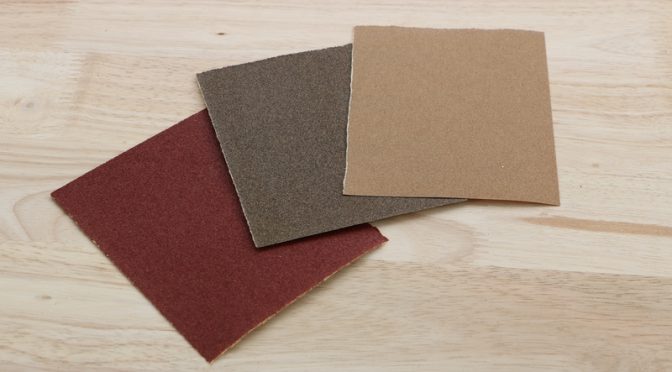There are various types of sandpapers, each of these different types of sandpapers is suited for a specific sanding task. The material that requires sanding also determines the type that will be needed. There are different sandpapers for sanding metal or wood surfaces. The level of success of the sanding project you’re undertaking is determined by choosing the correct sandpaper. If you need to smooth a surface, you should decide on the correct paper for you, there are different numbers, grits, grades and types of sandpapers. The following are the available types of sandpapers that you need to be aware of:
Dry sandpaper
This type of sandpaper is meant to be used on surfaces made of plaster, wood and metal. However, it’s more preferably used for repairing wooden floors. Dry sandpaper is also preferred for exterior wood surfaces, painted surfaces of metals, interior walls and wood furniture. When used on these surfaces, the resulting finished job of a higher quality than if a different type of sandpaper had been used.
Wet sandpaper
The most common places where the wet type of sandpaper is used are for reducing dust on interior walls, sanding fibreglass and metal surfaces. The abrasive material of the wet type of sandpaper is usually applied to either a sponge or cloth backing. Water in small amounts is applied for polishing the surface by acting as a lubricant. The sponge type often retains water for a longer duration than the one that has a cloth backing and contours to corners and curves. The wet sandpaper allows the grit to float over the surface that’s being sanded.
Power tool sandpaper
Special sandpapers are used with power tools. They include drums, discs, belts and pads. In case you’ve got a sanding power tool, ensure you’ve kept an ample reinforcement of the kind of sandpaper that it needs. As such, you’ll always be prepared to complete any job in the household as they come.
Garnet sandpaper
This type of sandpaper is great for sanding by hand. It’s mostly suited for raw wood for preparing the surface for finishing and removal of light scratches. This type of sandpaper quickly gets worn out.
Emery sandpaper
Emery is great for both power sanding surfaces made of metal as well as hand sanding. The finer grits of this type of sandpaper are suited for polishing. Coarser grits are used for removing paint or rust.
Aluminium oxide
This is a rather common type of sandpaper that’s used on drywall, metal, plastic and wood. It can be used for hand sanding but is most commonly preferred for power sanding since it’s very long-lasting.
Silicon carbide
This type removes material faster than the aluminium oxide type. The downside is that it doesn’t last as long as the aluminium oxide type. It’s used on metal, wood and plastic. The tasks performed using silicone carbide includes rough sanding, sanding between paints when finishing or for removal of rust and paint.
Zirconia alumina
This type is suited for painted surfaces, metal surfaces, and fibreglass surfaces. It lasts longer compared to aluminium. It’s available in discs, belts and for power sanding.
Ceramic alumina
This type is great for aggressive removal of material on wood and is available in discs and belts which are used for power sanding. They’re durable and last longer compared to aluminium oxide.

